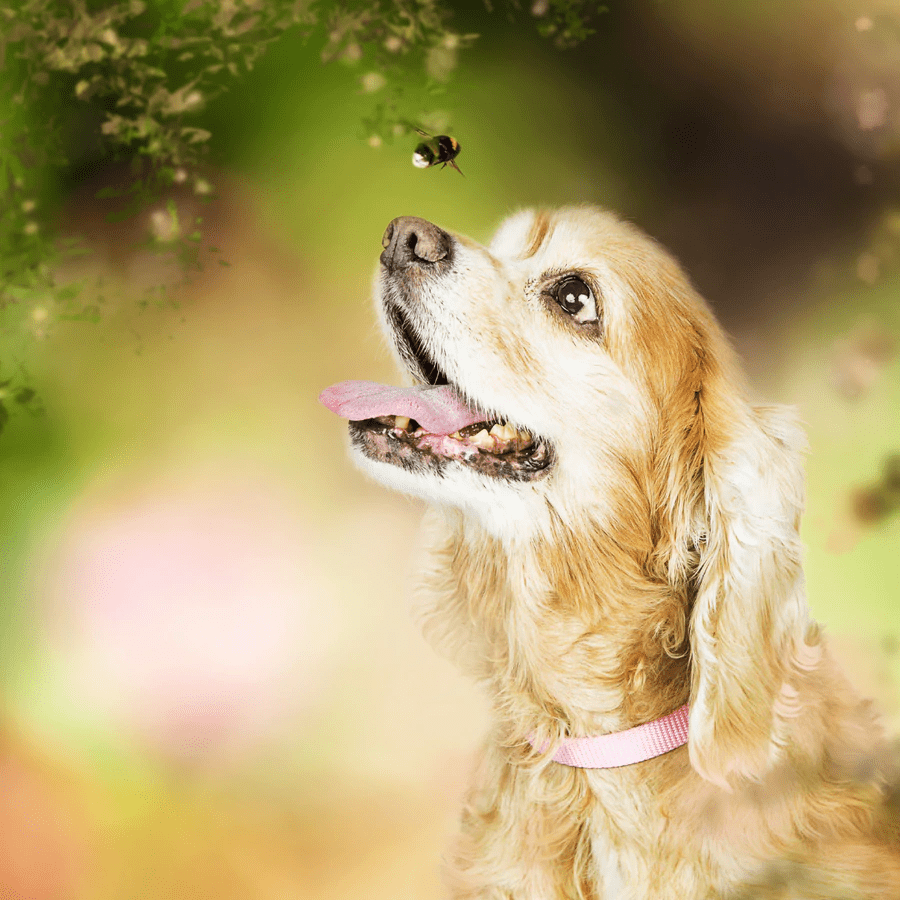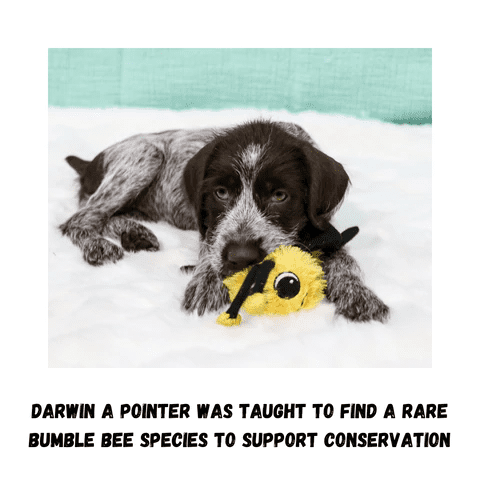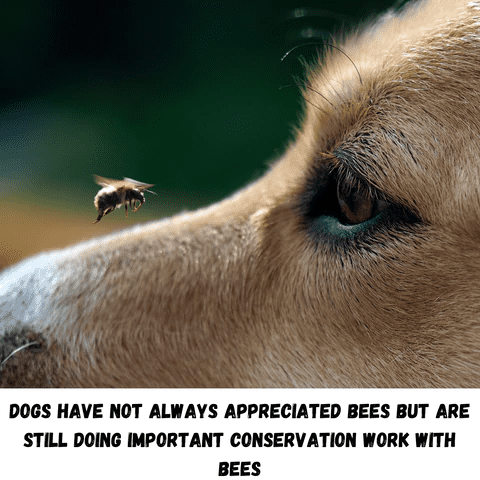We rely on amazing dogs more and more to provide us services including services for disabilities and emotional support and many other tasks as we at the same time discover all of the things that amazing dogs can do such as scent dogs that can do so many things like detect cancer, epilepsy and other medical issues. There is a newer growing class of service dogs called conservation detection dogs which are working on various conservation efforts.

What is a Conservation Detection Dog?
A Conservation detection dog is a dog that aids conservation efforts by detecting rare, endangered or difficult to study species. Their use has even expanded to include investigations to detect invasive species, poaching and environmental hazards.
What is a Bee Conservation Detection Dog?
A trained bee detection dog can locate out-of-sight nests without disturbing them, saving many hours of searching and allowing scientists to focus on the research and discovery of important bee species and their habits.
According to the Natural Resources Foundation of Wisconsin there are 250 species of bumble bees worldwide, with 46 species found throughout the United States. Hard-working and efficient pollinators, bumble bees are responsible for assisting pollination of a variety of crops, such as apples, berries, squashes, tomatoes, and alfalfa due to their ability to buzz pollinate.
Bumble bees literally shiver their flight muscles which causes their hairy bodies to dislodge an incredible amount of pollen from each flower. Bumble Bees don’t just pollinate commercial crops necessary for our food and agriculture but certain Bumble Bees like the Rusty Patch Bumble Bee, are a keystone species of alpine pollinators; without them many pollinators will not survive.
At the same time, according to the Natural Resources Foundation of Wisconsin, bumble bees are opportunistic nesters, utilizing spaces other animals have created, such as mouse and bird nests, or hollowed out logs and cavities. They also burrow into loose soil and debris, like garden mulch or grass clumps. With so many locations a bumble bee nest could be, surveys can be quite difficult.
This fact led Jacqueline Staab, a 28-year-old grad student from Appalachian State University to train the first Alpine Bumblebee Conservation detection dog in the Western Hemisphere, a German Shorthaired Pointer, Darwin, who has been trained to detect bumblebee nests in the alpine forests of the Western Hemisphere.

Darwin’s work was important since according to Jacqueline, these bees all live above 11,000 ft, with changeable weather and unusual conditions for bees to survive. As one of the few pollinators who live at such a high altitude, their importance cannot be understated. With bumblebee populations in decline – some research suggests they have dropped almost 30% in a generation which makes the Alpine Bumblebee’s work and dog’s like Darwin more important now than ever.
However, you may also know that bees and dogs in particular dog’s noses do not always get along. Add the challenges of buying and storing Bumble Bees to train dogs like Darwin and this is no easy task.

Training Conservation Detection Dogs
According to Jaqueline, dog training needs to be done with the specific bee that the dog is being trained to find. Those specific bees can be ordered but they come in a box and as the hive gets big the bumble bees will start to find ways out and chew the air holes open on the boxes which means a lot of escapees.
Once Darwin was trained his role was to find the very difficult to find Alpine bee colony. Once found scientists could watch the bumble bee hives and their behavior as a key species for detecting healthy ecosystems or indications of issues.
Dogs like Darwin and other conservation dogs are making great contributions for our health and wellbeing and conservation research and study.
If you know a conservation dog drop us a note so we can tell its story.
You may also like other articles in our Amazing Dogs Series:
Can Dogs Detect Cancer in Humans? The newest dog detection research
Amazing Dog Series: What is a Scent Dog Used For?
Check out more in our Amazing Dogs Series. Dogs that inspire us:
Amazing Dogs Series: 5 Amazing Livestock Guardian Dogs and their Jobs
Amazing Dog Series – The Complete Guide to Emotional Support Animals (Plus Handy Infographic comparison ESA to Service Dogs and Downloadable sample ESA letter)
Amazing Dogs Series: Amazing Jobs- Conservation Detection Dogs Jobs for Conservation Koala Detection
Amazing Dog Series: The Important Dog Job of Cadaver Dogs

